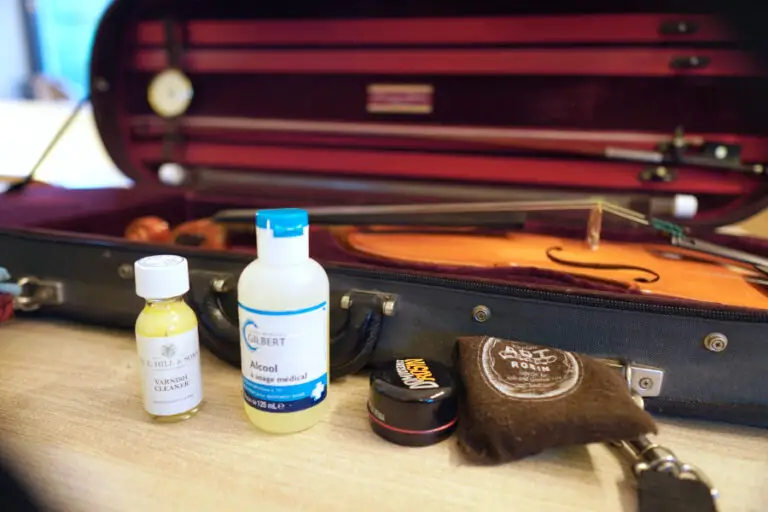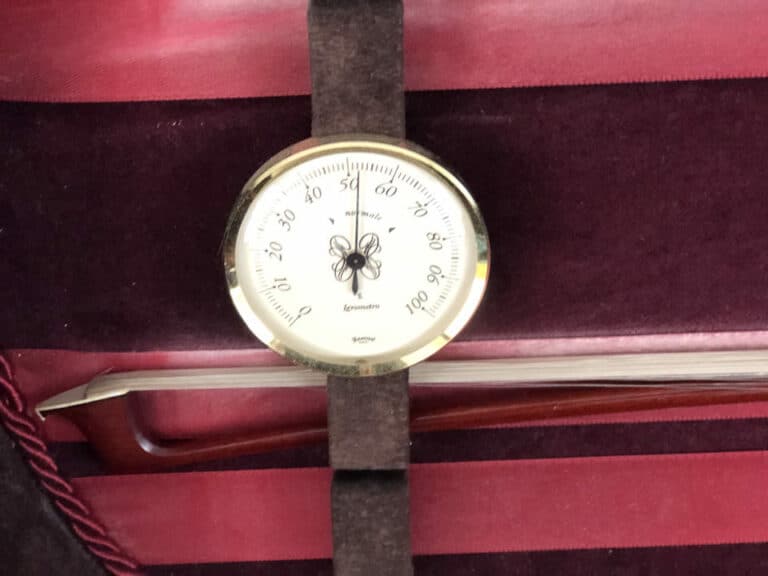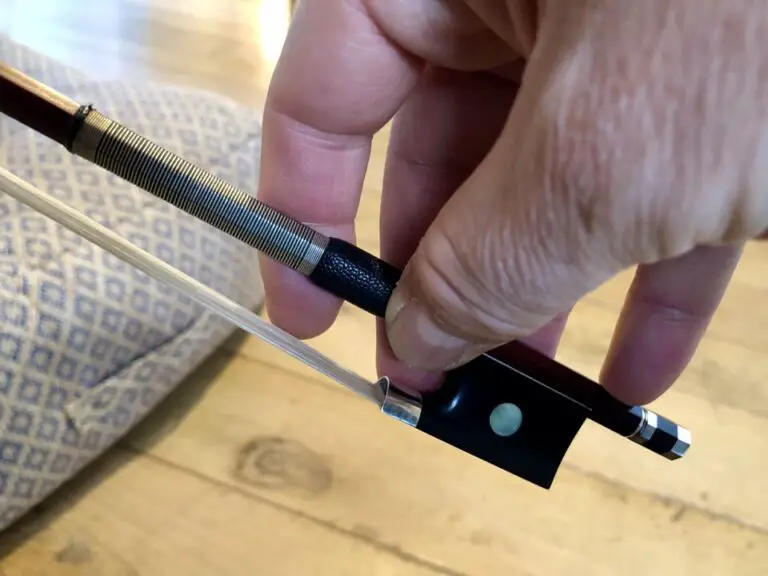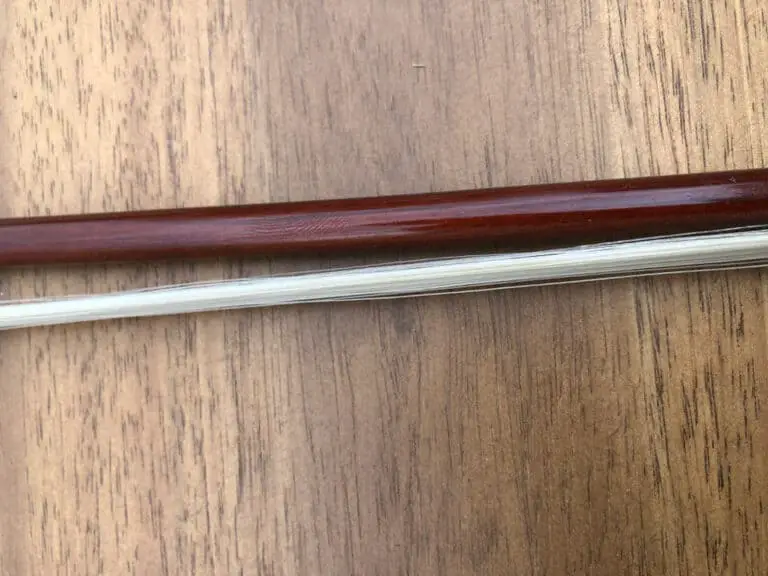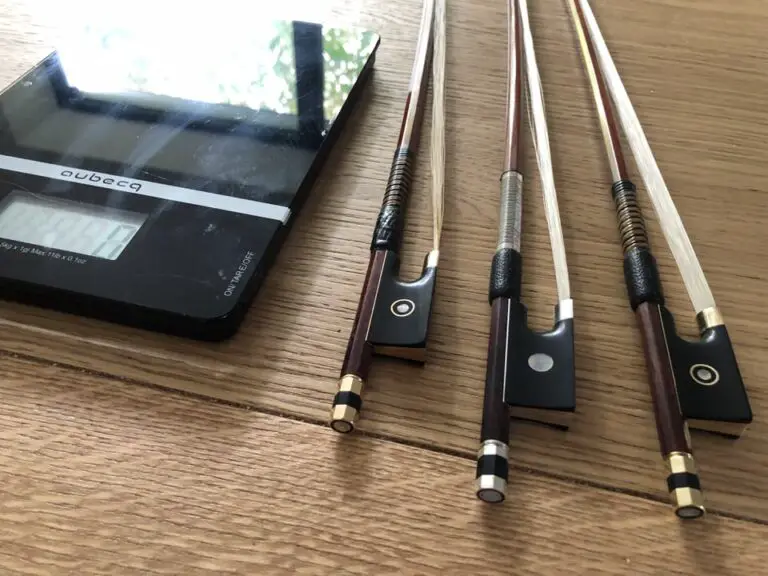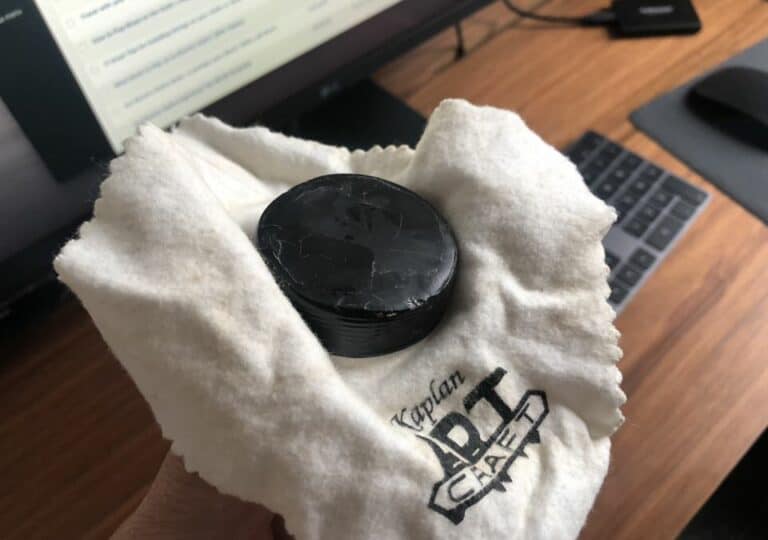How to Remove that Sticky Rosin from Your Bow, Violin, or Hands!
When the great Yehudi Menuhin was asked what he didn’t like about the violin, his answer was “The rosin!”. Yes, that sticky powder can be cumbersome. It sticks to the violin table, to the strings, to the bow sticks, and our hands!
But, if managed properly, the rosin can be ok. We just need to clean it regularly.
Wipe rosin dust with a microfiber cloth without force. Vaporize a small amount of alcohol on the cloth for the dirtiest parts. You can use Hill’s famous varnish cleaner from time to time to get the shiniest results.
Rosin is a simple and natural product made out of the sap of pine, as I have detailed in this article. So it usually comes off easily, let’s see how in detail.
How to remove rosin from the bow hair?
Sometimes, it can happen that you want to clean the rosin of your bow hair, for several reasons:
Usually, it is not something to do because bow hair loves rosin, strives for it, and can’t get nearly enough!
There is no real downside to having too much rosin on the bow hair. The sound is still ok and doesn’t become particularly scratchy. The problem is when there is too little rosin: the sound becomes too airy and is less controllable.
If you have too much rosin on your bow hair, this is what to do:
- you can just play to warm up, and the quantity of rosin will be perfect for your performance (just clean your instrument before!)
- the easiest way is to loosen your bow hair to a point where it resembles a strand of hair. Then, make big and fast gestures in the air as if it was a sword (and hear the sound). Make sure not to damage your bow on something! Do it a couple of times and the excess bow dust will be naturally gone in a couple of seconds.
- alternatively, you can swipe the rosin off with a cloth. But clean the cloth afterward, don’t polish your instrument with it!
How to clean rosin off the bow stick?
It is a bit trickier to clean your bow stick. It depends on whether it is made of wood or made of synthetic material (fiber, carbon fiber).
If your bow stick is synthetic
If your bow is made of carbon fiber, clean it with a cloth saturated with soapy water. Start with the part of the bow that doesn’t touch the hair, towards the dirtiest part, at the end. Rosin comes off easily. Swipe your stick with a clean and dry microfiber to finish the job.
If your bow is made out of wood
If your bow is made out of wood, especially Pernambuco, you should be more careful.
- First, wipe gently the dust off the stick, starting with the part of the bow that doesn’t touch the hair (the cleanest part). Don’t apply any pressure. You don’t want to force the dust into the wood. Swipe gently.
- Second, vaporize a really small amount of alcohol on a dry microfiber cloth. You shouldn’t feel a wet cloth on your hands. Then swipe carefully the part of the bow that touches the hair. Do it a couple of times. The alcohol will help solve the sticky rosin dust off the wood. What you do NOT want to do, is soak the wood with alcohol.
- Last, finish by polishing the stick with a clean microfiber cloth.
- You can add a really small amount of Hill Varnish Cleaner (easy to find on Amazon) to polish the upper part of the stick. It will be clean and shiny!
You can read all the little secrets about how to clean your bow in my guide here.
How to clean rosin off the strings?
Violin strings get dirty every time. So there is no need to clean them constantly. But between sessions, it is a good practice to clean them in order to have the best sound. If your string is covered by stuck rosin dust, it won’t vibrate as fully and freely.
- Between sessions, just use a clean and dry microfiber cloth to gently wipe off the dust. Clean the upper part AND the lower part of the string.
- Regularly, but not as often, you have to clean the strings more thoroughly. Wipe the dust with a dry cloth as above. But then, apply alcohol on a cloth and clean the strings, starting from the cleanest parts (where you put your fingers on the fingerboard) to the dirtiest (the bridge). You can put more alcohol than recommended to clean the bow. Finish off with a dry cloth.
How to clean the rosin off the fingerboard?
There is no need to clean the fingerboard too often. The problem is more finger dirt than rosin. But let’s hope we all play the violin with clean hands!
Depending if you practice a lot, or not, let’s say cleaning the fingerboard is to be done weekly (amateur) to daily (professional).
I start with a dry cloth again to get rid of the most part.
Then, typically use a cloth with alcohol. Again, I go from the cleanest part of the fingerboard to the dirtiest, where there is the most dirt.
How to clean rosin off the violin table?
Some fiddlers never clean the dust off their fiddle! There is some Rock’n’Roll vibe to it! You wouldn’t walk through the gate of a classical conservatory with a violin like that…
Ok, more seriously, it is trickier to clean the table of the violin because the varnish is fragile.
Do not use any chemical on the varnish of the violin. You don’t want to dissolve it and ruin your instrument.
Let’s see how my luthier recommends doing it:
- First, blow with an air duster to remove the maximum rosin dust away from the violin without any friction motion.
- Then, beginning with the cleanest parts (away from the bridge), without applying any force, dust the rosin off the table as much as you can.
- Lastly, as I recommended for the Pernambuco stick, spray a small amount of alcohol on a clean microfiber cloth (not directly on the violin). Then, clean the part below the strings, close to the bridge. The tiny amount of alcohol on the fibers of the cloth will help take off rosin residues.
- Finish with a dry cloth.
You can use a small amount of Hill’s varnish cleaner. But these are products not to use too often if you want your violin to last longer. Luthiers insist on the risks of over-polishing your violin (remember, violins can last several centuries…)
Last minute tip: the best way to keep your violin clean under the bridge is to protect it (when practicing only) with a small sheet of transparent plastic. Just take the plastic off and your violin table is as clean as new every time!

